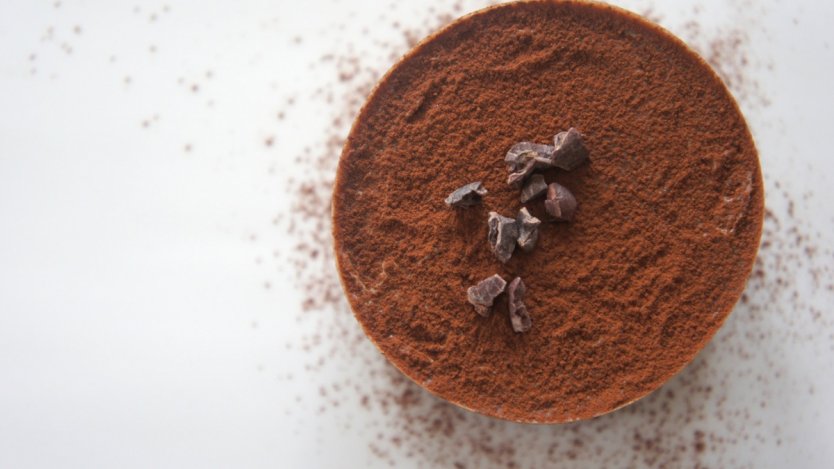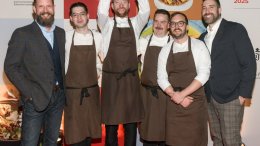With or without Valentine’s day coming up, it’s always a good time for chocolate. However, with so many fillers and additives in the mix, much of the “chocolates” sold in large quantities at grocery stores and other outlets have really little chocolate in them. What’s promising though, is that the past five years or so has seen an astounding increase in the prevalence of “bean-to-bar” chocolate for which chocolate producers are getting beans straight from the source and making them from scratch. We chatted with Montreal’s chocolate aficionado, Karine Guillemette of Miss Choco to get the scoop on Montreal’s chocolate scene, what makes bean-to-bar a better alternative, as well as ways to enjoy it this Valentine’s day.
What got you into the field of bean-to-bar chocolate?
Before chocolate I was working in education. I did a master’s degree and worked as both a researcher and lecturer. In 2008 while I was still doing that, I started to get interested in chocolate. My roommate at the time was working in restaurants and bakeries, and he knew Valrhona. That was basically the only option, the only good single-origin chocolate, here at the time. I realized that chocolate was not what I thought it was. It’s different according to the origin. I didn’t know anything about that, but because I was a researcher, I started researching more about cacao, plantations, how it has transformed into chocolate, life conditions of the farmers, and everything. I had a very flexible schedule with research, so I started to visit cacao plantations in different countries, and visit chocolate makers, to taste all the chocolate I could find. In 2012, four years after I discovered chocolate, I decided to switch careers and start doing chocolate tastings with people. I’m a teacher so it was a natural fit. Not long after that, I met Jacques, my ex business partner. He needed someone to help with whisky and chocolate pairings. Since that moment, we started to do pairing events and started to import bean-to-bar chocolate. Eventually, we decided to open a bean-to-bar store in Montreal.
How has Montreal’s chocolate scene changed since you started working in the field?
Well, a lot, not just in Montreal, but in Quebec. When I started, there was only one person that was selling one chocolate bar made with beans from Mexico. Because I took a course with Ecole Chocolat, two people contacted me who are now chocolate makers here, Christine from Palette de Bine, and Daniel from Chocolats Monarque. When we opened the store in the beginning of 2014, there were not so many chocolate makers in Quebec, or even Canada. We were selling Sirene from Victoria, Habitual out of Ontario, Chocosol, and a couple of others. When we were talking to customers, no one had heard about bean-to-bar. They didn’t know what it was, so it was a bit difficult to educate. In the last five years, many people have come into the industry. There’s now Chaleur B in Gaspésie, Catherine from Avanaa, Cacao 70, and a couple of others.
How does Montreal’s bean-to-bar scene compare with other cities in the country?
There’s a lot going on, for sure. If it’s not more, it’s equal. In Toronto, you’re seeing more appearing, but for many years it was only Chocosol and Soma. Vancouver and area is starting to have a nice chocolate scene too.
When you think about educating the consumers, what are the important things they should know when choosing chocolate?
If they are able to understand the differences between bean-to-bar chocolate and industrial chocolate, especially at the flavour level first, maybe they will be more willing to pay for chocolate that tastes better. It’s a first step. I don’t think we can expect the customers to know everything about chocolate and cacao. There are so many products in the world: tea, coffee, bananas. I don’t know everything about tea, coffee, and bananas, so I don’t expect consumers to know everything about chocolate.
Tell me a bit more about your PhD.
My PhD is at Concordia in the individualized program, which means that I basically create my own program. I’m working with four different advisors in four different fields. I should say that my PhD is in food studies, that’s the umbrella, specifically about critical consumer education or food pedagogy around chocolate.
What do you see as the biggest barriers to educating consumers around chocolate?
I think it’s still the willingness to pay more for those products. Even if you understand what’s behind the chocolate bar, as long as you’re not involved enough with the product, it will not change your behaviour and you will still buy the cheapest product. The challenge would be to have tools to get these people more involved.
How do you get them involved?
Well this will be my PhD, so I don’t have the answer, but what I’m seeing and what I’ve heard from chocolate makers is that it is mainly the flavours first. For some people who change what they buy, there is a moment where they realize what chocolate can taste like. They didn’t know that; it’s a revelatory moment. Then they start to understand better. When a chocolate tastes like that, it means that it’s not industrial, which means that probably the situation with the farming and other ethics is a bit better.
What do you think the future of bean-to-bar chocolate is in Montreal?
Well, I don’t know if it’s a change I anticipate, or more of a wish, but I hope it will expand into other regions. Right now, it’s only in Montreal and there’s one producer in Gaspésie. There used to be someone in Quebec City, but I don’t know what happened there. Outside of big cities, there’s not a lot.
Thinking about Valentine’s Day and chocolate, do you have any recommendations when pairing drinks with chocolate?
I mostly work with beer, spirits, and cheeses. What I usually do—rather than thinking, “This is a dark chocolate and I need to pair it with a dark beer”—we just try to have as many chocolates as we can, as many beers as we can, and try everything together to find the right pairings. One of the best is white chocolate and IPA. The bitterness helps cut through the sweetness. If you work with blinders, you would never try that. With cheese and spirits, it’s the same process. White chocolate and goat cheese is also a really good pairing. It’s like eating vanilla ice cream.













